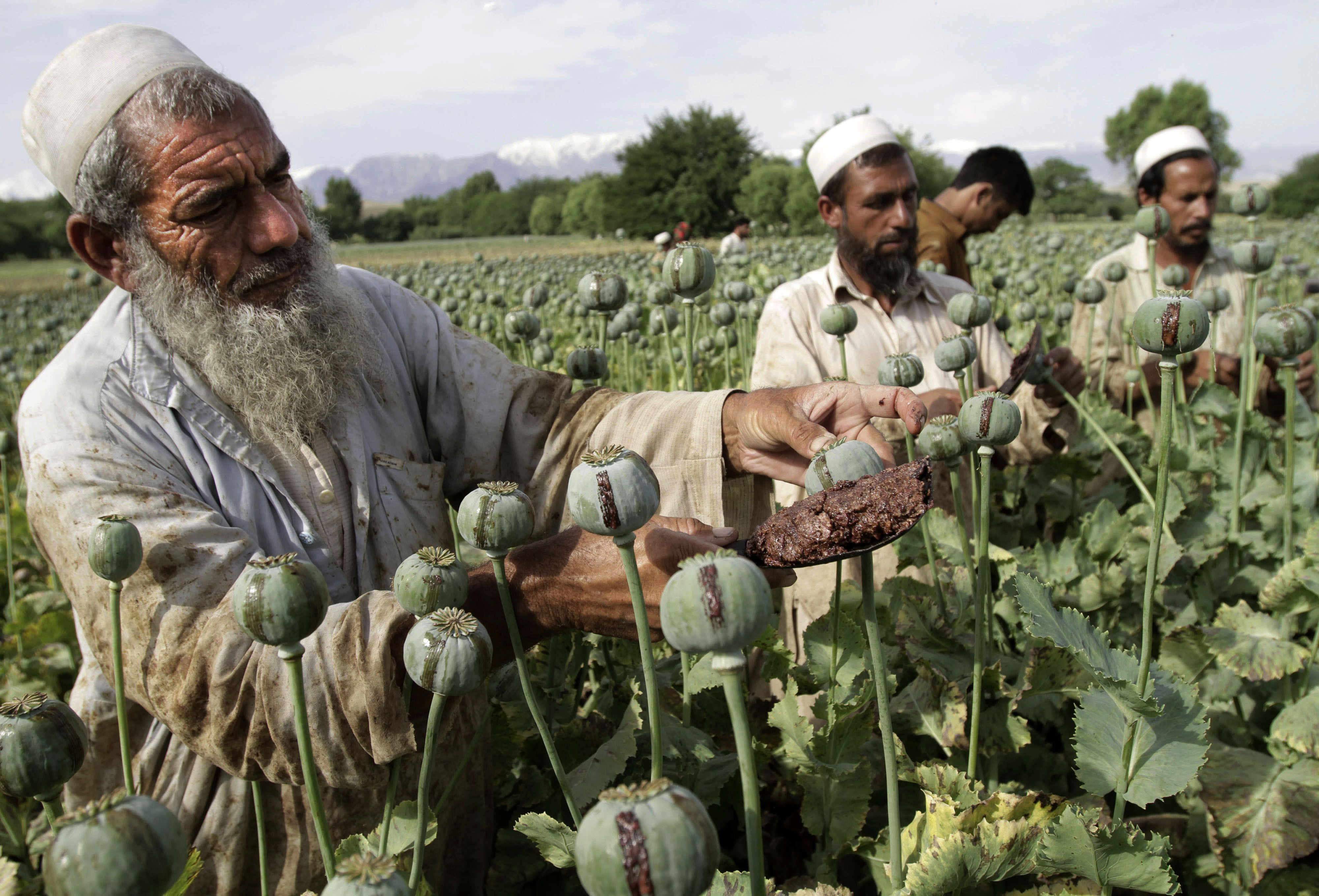Afghan Opium Production Soars: UN

NEW DELHI: Opium production in Afghanistan rose by 43 per cent to 4,800 metric tons in 2016 compared with 2015 levels, according to the latest Afghanistan Opium Survey figures released by the Afghan Ministry of Counter Narcotics and the UNODC. The area under opium poppy cultivation also increased to 201,000 hectares (ha) in 2016, a rise of 10 per cent compared with 183,000 ha in 2015.
In a statement timed to coincide with the survey's launch, UNODC Executive Director, Yury Fedotov, said that the new report shows a worrying reversal in efforts to combat the persistent problem of illicit drugs and their impact on development, health and security. Consequently, he urged the international community to lend their support to achieving the sustainable development goals in Afghanistan - including vital work on a peaceful and inclusive society, health, poverty, peace, and gender, among many others.
The higher production can be explained by the larger area under opium poppy cultivation, but the most important driver is the higher opium yield per hectare. The largest yield increase occurred in the Western region where the average yield grew by 37 per cent and the Southern region, with a 36 per cent rise. Since these two regions account for 84 per cent of the total opium poppy cultivation in Afghanistan, the yield increases in these regions had a strong impact on the national potential opium production.
The average opium yield, meanwhile, is at 23.8 kilograms per hectare (p/ha) - 30 per cent more than in 2015 (18.3 kilograms p/ha). A total of 355 ha of poppy eradication was carried out by the provincial Governors in 2016. This represented a decrease of 91 per cent from 2015 when 3,760 hectares were eradicated. In 2016, eradication took place in 7 provinces, compared to 12 provinces in 2015.
Hilmand, with some 80,273 ha (40 per cent of the national total), remained the country's major opium poppy cultivating province. This is followed by Badghis (35,234 ha), Kandahar (20,475 ha), Uruzgan (15,503 ha), Nangarhar (14,344 ha), Farah (9,101 ha), Badakhshan (6,298 ha) and Nimroz (5,303 ha).
As noted in the Survey, opium cultivation decreased in some of the main opium poppy-growing provinces, notably Farah and Nimroz (which saw declines of 57, and 40 per cent, respectively), but climbed in the provinces of Badghis (by 184 per cent) and Badakhshan (by 55 per cent).
The southern region has the country's largest share of national opium production with 54 per cent recorded, which equals some 2,591 metric tons (MT). Afghanistan's second most important opium producing region is the Western, responsible for 24 per cent of national production (1,139 MT), followed by the eastern region with 12 per cent (571 MT). The remaining areas (north-eastern, northern and central regions) together, accounted for only 10% of opium production.
During the latest eradication campaign eight lives were lost and seven people were injured. In 2015, five lives were lost and 18 people were injured.
In 2016, 93% of the total opium poppy cultivation in Afghanistan took place in the Southern, Western and Eastern regions of the country. The Southern region accounted for 59% of the total cultivation; the Western for 25% and the Eastern for 9%. The remaining regions (Northern, NorthEastern and Central) together accounted for 7% only.
Hilmand remained the country’s major opium poppy cultivating province (80,273 ha), followed by Badghis (35,234 ha), Kandahar (20,475 ha), Uruzgan 4 (15,503 ha), Nangarhar (14,344 ha), Farah (9,101 ha), Badakhshan (6,298 ha) and Nimroz (5,303 ha). In 2016, the number of poppy-free provinces in Afghanistan decreased from 14 to 13. Opium poppy cultivation in Jawzjan, in the Northern region, was estimated at 409 hectares and this province lost its poppy-free status, which it had regained in 2008. All regions except the Southern region experienced an increase in opium poppy cultivation in 2016, with the largest relative increase being in the Northern region (+324), followed by the North-eastern (+55%), Eastern (+44%), Central (+24%) and Western (+15%) regions. Cultivation in the Southern region stayed practically stable (-1%). The largest absolute increases took place in the Western and Northern regions, where, respectively, 6,759 and 6,076 more hectares were under opium poppy cultivation.
A total of 355 hectares of poppy eradication was carried out by the provincial Governors in 2016, as verified by MCN/UNODC. This represented a decrease of 91% from 2015 when 3,760 hectares were eradicated (verified by MCN/UNODC).
Read the full survey here.



